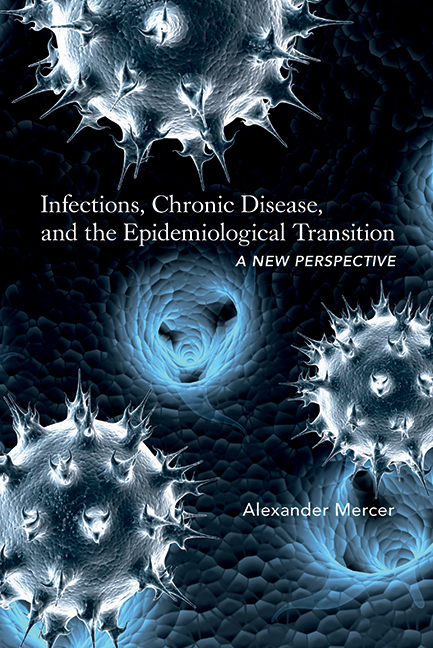Book contents
- Frontmatter
- Dedication
- Contents
- Preface
- Acknowledgments
- Introduction
- 1 Background
- 2 Theoretical Framework, Data, and Study Outline: The Concept of Epidemiological Transition
- 3 A New Infectious Disease Environment
- 4 Mortality Decline, Food, and Population Growth: “Standard of Living” and Nutrition
- 5 Smallpox
- 6 Typhus, Typhoid, Cholera, Diarrhea, and Dysentery
- 7 Infant Mortality
- 8 Child Mortality
- 9 Tuberculosis
- 10 Respiratory Diseases
- 11 Cardiovascular Disease
- 12 Cancer
- 13 Other Chronic Diseases
- 14 Epidemiological Transition: A New Perspective
- Appendixes
Preface
Published online by Cambridge University Press: 14 March 2018
- Frontmatter
- Dedication
- Contents
- Preface
- Acknowledgments
- Introduction
- 1 Background
- 2 Theoretical Framework, Data, and Study Outline: The Concept of Epidemiological Transition
- 3 A New Infectious Disease Environment
- 4 Mortality Decline, Food, and Population Growth: “Standard of Living” and Nutrition
- 5 Smallpox
- 6 Typhus, Typhoid, Cholera, Diarrhea, and Dysentery
- 7 Infant Mortality
- 8 Child Mortality
- 9 Tuberculosis
- 10 Respiratory Diseases
- 11 Cardiovascular Disease
- 12 Cancer
- 13 Other Chronic Diseases
- 14 Epidemiological Transition: A New Perspective
- Appendixes
Summary
Much has been written since the 1970s about the causes of the decline in mortality from infectious diseases, but far less about the emergence of chronic diseases. When Abdel Omran first referred to the change in predominant causes of death as an “epidemiologic transition,” academic studies tended to focus more on issues raised by Thomas McKeown in his influential book The Modern Rise of Population. McKeown's emphasis on improvements in the “standard of living” and nutrition as key determinants of increased life expectancy aroused considerable controversy, while Omran's “theory” of transition remained a basically descriptive framework for analysis of changes in disease and mortality. The epidemiological transition is ongoing globally, and constitutes a fundamental change in the human condition; as such, the phenomenon has both contemporary relevance and historical importance.
One objective of this book is to review evidence from local, national, and international studies indicating that preventive measures and changes in behavior played a far greater role in mortality decline in England and globally than McKeown or Omran suggested. However, the aim is to go beyond the controversy over the relative importance of “human intervention” and “standard of living” as determinants of increased life expectancy. Assessment of changes in disease and mortality in England since the 18th century and their possible causes is fundamental to an understanding of how contemporary patterns of disease emerged. A very long-term perspective is particularly important as it encompasses the development of a preventive approach to disease in response to devastating epidemics of plague, smallpox, and typhus that laid the foundation for later health interventions. Records of cause-specific mortality available for England, with supporting data from other Western countries, form the basis of this review of the epidemiological transition and illustrate its main features—acute infectious diseases being superseded by chronic diseases as the predominant causes of death, a shift in age at death from childhood to older adult ages, increased life expectancy, and a larger, “aging” population.
A central theme of the book is the interrelated nature of diseases, particularly the role of microbial infection in chronic diseases, which indicates there is another dimension to epidemiological transition. The original concept oversimplified the process, viewing it as the replacement of one group of distinct diseases (infectious) by another (“degenerative” or “noncommunicable”).
- Type
- Chapter
- Information
- Infections, Chronic Disease, and the Epidemiological TransitionA New Perspective, pp. ix - xiiPublisher: Boydell & BrewerPrint publication year: 2014

